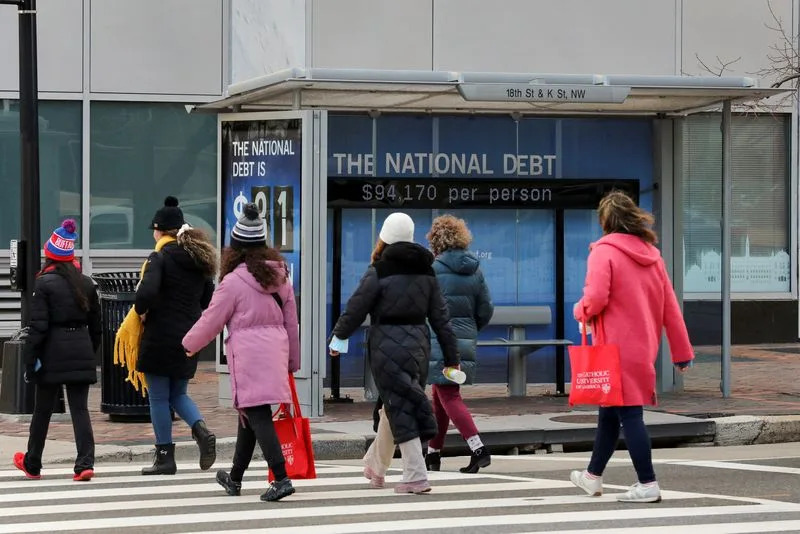The U.S. government’s deadline to raise the $31.4 trillion debt ceiling could come sooner than expected, raising the prospect of a near-term debt limit extension, analysts said Tuesday.
Goldman Sachs analysts said weak tax collections so far in April indicate an increased likelihood that the so-called “X date,” when the government can no longer pay all its bills, will be reached in the first half of June. Citi analysts said they expected a near-term deal in June or July.
The Treasury Department has warned that the federal government could reach the point where it is no longer able to meet its financial obligations as early as June 5, while the nonpartisan Congressional Budget Office has predicted that point would come sometime between July and September.
Meanwhile, U.S. House Speaker Kevin McCarthy on Monday outlined the spending cuts his fellow Republicans would demand in exchange for voting to raise the debt limit.
The limit was back in the spotlight on Tuesday, the so-called Tax Day when individual income tax returns are due, meaning the Treasury will soon know how much it will raise.
“As the debt ceiling date becomes more focused on additional tax collection data, we expect to see a higher valuation of debt ceiling risks in financial markets,” Goldman Sachs analysts said in a note.
The yield on the 2-month U.S. Treasury bill jumped Tuesday to its highest level since at least 2018 as unease over the U.S. debt ceiling and the likelihood of another interest rate hike took hold.
The cost of insuring U.S. debt against a one-year default stood at about 95 basis points on Monday, according to Refinitiv data, well above levels in 2011, when a standoff over the debt ceiling prompted the first downgrade of the U.S. government’s credit rating.
Goldman Sachs had forecast that the Treasury would exhaust its cash and borrowing capacity in early to mid-August, but said weak tax revenues in April could bring the deadline forward.

